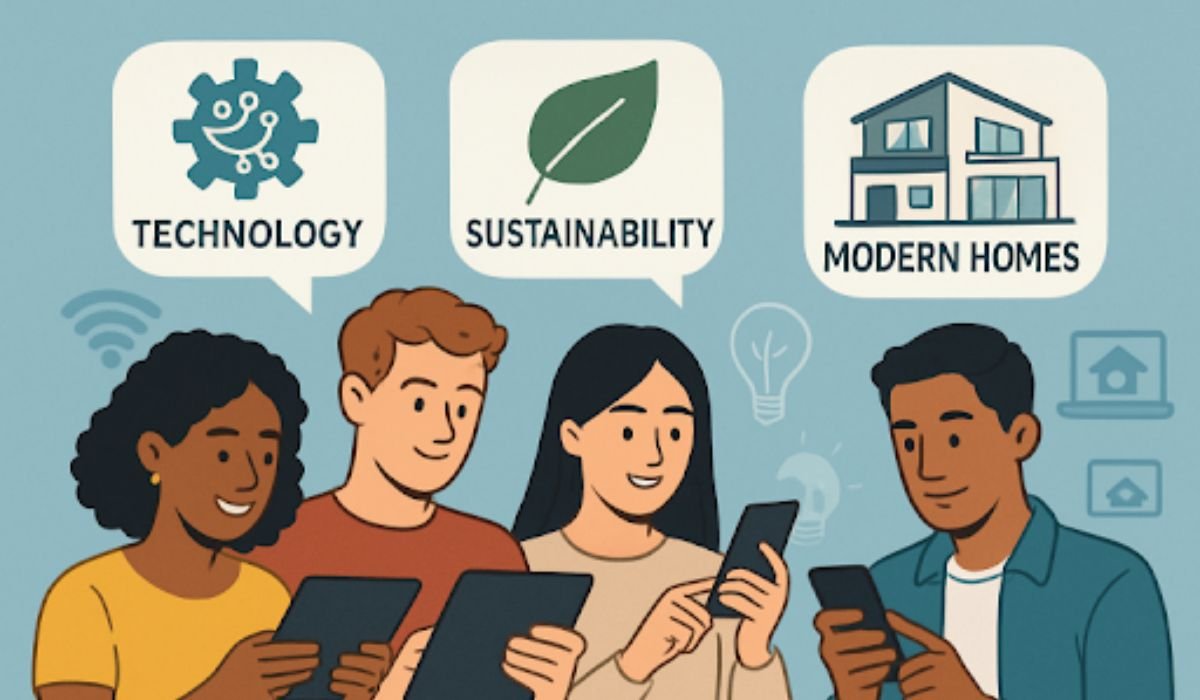Key Takeaways
- Home buyers today, especially from younger generations, demand affordability, sustainability, and seamless digital experiences.
- Technology like virtual tours and online home shopping is now an industry standard, making the process faster and more efficient.
- Demographic shifts—including more single and female buyers—are broadening the housing market’s diversity and needs.
- Rising home prices and interest rates are prompting buyers to reconsider timing and priorities.
The real estate market has continuously evolved alongside shifts in lifestyle, technology, and economic priorities, but today’s home buyers are driving changes at an unprecedented pace. From preferring flexible living spaces to valuing energy efficiency and digital accessibility, modern buyers are redefining what makes a property desirable. Their choices influence the kinds of homes being built and the strategies sellers and agents use to connect with them.
For those specifically interested in exploring available properties, Columbus GA homes for sale offer a glimpse into modern home possibilities and trends in local real estate. Observing these shifts provides useful insight into how buyers’ preferences—whether for open layouts, smart home features, or community-focused developments—are shaping the future of housing across different markets.
Millennials and Gen Z: Redefining Homeownership
Millennials and Gen Z are having an outsized impact on real estate, using their collective purchasing power to shift market norms. For these generations, affordability remains a top concern, driving demand toward more reasonably priced markets, modestly sized homes, and areas with growth potential. At the same time, their interest in sustainability is prompting a rise in demand for energy-efficient homes, eco-friendly materials, and green certifications. They also deeply value digital ease throughout the buying process, from automated alerts for new listings to paperless closings.
Embracing Technology in the Home Search
Digital innovation drives today’s home-buying with virtual tours, livestreamed open houses, and online listings offering convenience for buyers and agents. Mobile platforms enable browsing, comparing, and offers without visiting offices, essential for attracting tech-savvy clients. Leading sites see record online traffic, highlighting this “digital-first” trend.
Demographic Shifts Influencing the Market
Alongside technological change, demographic evolution reshapes who buys homes and why. There’s been a marked increase in single and female buyers, reflecting broader social trends around marriage, family structure, and economic independence. The National Association of Realtors notes that single women comprise a significant share of first-time buyers, while more single men and young professionals enter the market independently. These changes push demand for smaller, more manageable properties and neighborhoods that support solo living or flexible work-life balances.
Economic Factors Shaping Buyer Behavior
The market environment itself is another powerful influence. Ongoing increases in mortgage rates and persistently high home prices have cooled some of the pandemic-era buying frenzy. As a result, some would-be buyers are delaying their purchases, saving for larger down payments, or compromising on location and size. Others turn to less expensive metro areas and suburbs, driving up competition in previously overlooked markets.
The Rise of Build-To-Rent Communities
One of the most significant trends born from affordability challenges is the rise of Build-To-Rent (BTR) communities. These purpose-built neighborhoods offer the comfort and amenities of homeownership—such as yards, garages, and privacy—without requiring long-term financial commitment. Built for renters, BTR developments are especially compelling to Millennials and Gen Z, who may not yet be ready or able to commit to a traditional mortgage but want a home-like living environment. The BTR sector is one of the fastest-growing segments in residential real estate today, as flexibility and low-maintenance appeal draw increasingly larger shares of renters-by-choice.
Investors’ Growing Presence in the Housing Market
Institutional and individual investors are taking advantage of these shifts by purchasing more available homes, often to convert them to rental properties. Their deep pockets and ability to pay cash set them apart from the typical buyer, making competition fiercer for traditional buyers—particularly in entry-level and starter-home markets. This investor activity can decrease inventory for owner-occupants and raise average rental rates as demand for non-owned housing increases.
Social Media’s Impact on Real Estate
Social media is revolutionizing how properties are discovered, marketed, and shared. Platforms such as Instagram and TikTok enable agents and sellers to reach an enormous, engaged audience—especially young, digital-native buyers. Listing videos, virtual walkthroughs, and real-time Q&A sessions on social channels provides an interactive, accessible experience that often leads to faster, more informed purchasing decisions. Social media isn’t just a trend; it’s a powerful new frontier in real estate marketing and community-building.
Conclusion
Modern home buyers are pushing the real estate market to become more transparent, flexible, and tech-driven. As Millennials, Gen Z, and diverse buyer groups redefine what it means to own a home, industry players must continue adapting to these evolving needs. Staying informed about market trends is critical for professionals, sellers, and buyers alike as the future of real estate unfolds.
YOU MAY ALSO LIKE: Sustainable Energy Choices for Modern Households

